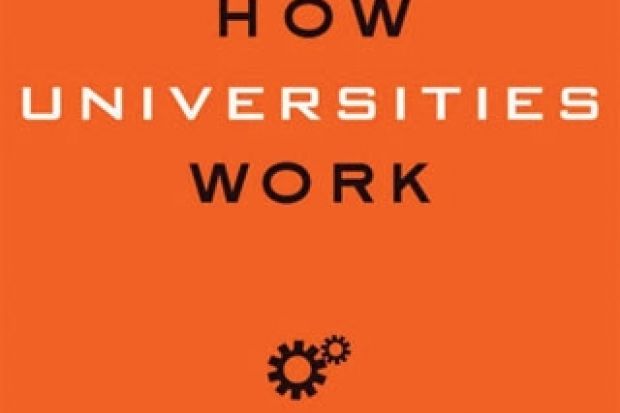Deans lose their faculties, departments lose their heads, but what happens when presidents stop presiding? In that career twilight many write, often to say what they didn’t dare to say when in office. In some cases the result is useful accumulated wisdom; in others, retrospective self-justification or pre-senile meandering. John Lombardi, over the course of a career as provost, president and chancellor of four leading US universities or systems, has more accumulated wisdom than most. His is an unsentimental, epigrammatic, drily witty book – admirable for one who exited his final high post amid a blaze of acrimony.
But the book’s title is wrong. Most universities don’t work like this. As Lombardi clarifies in the opening pages, a couple of hundred US “research universities” might. And that illustrious template influences a range of less elite institutions.
Lombardi’s view of the primacy of research is unequivocal. Not for him the equal nexus between teaching and research: “Research, being the leading product of the university and the source of all that we eventually teach, enjoys first rank”. It is a national and international concern, while “teaching is of local importance to an institution because it affects only one institution’s students”. There is only a “competency floor” to teaching, he asserts, while research has clear, workable quality benchmarks. Universities, in short, are “quality engines”, with research at their heart.
The book’s title is also misleading because only the earlier chapters are about how universities work. It then moves on to explain how universities might improve before finally addressing how universities innovate.
Title aside, however, Lombardi’s is a handy book, particularly for those who come from university traditions that grapple with similar problems and wonder how to solve them. His simplification of complexity and lean explanations are a joy in a field that often takes pride in its opacity to outsiders.
In the UK we still talk about “disciplines” and “collegiality”. Lombardi describes approximately the same phenomena through the quaint language of “academic guilds”. To him, the academics – not the students – are the lifeblood of the institution. The academic faculty, like the guilds, regulate quality, determine appointments and assess promotions. They are the university’s biggest investment. Asserts Lombardi, “students come to the university because of the faculty, and without the faculty, no university would exist”.
Deans and heads are the “guild masters”, says Lombardi, mediating between “the corporate nature of the university and the guild spirit of the faculty”. And finally, he observes that about a quarter of the students turn over each year. Administrative staff turn over much less frequently, and the faculty – well, they are with you always. Of course, you could turn all this rhetoric on its head, with students suddenly at the “heart of the matter”. But Lombardi, while not overlooking student issues and needs, doesn’t do that. He takes his own advice and “follows the money”.
I found the most satisfying part of this book to be the slower-paced middle section, with its focus on institutional improvement. Here, he provides lucid explanations of how finances, data, quality assessment, fundraising and support services can help create a better, more incentivised university. Some of this address is rather US-specific in approach and terminology, but as governments worldwide seek to cut back on public expenditures, his advice is timely.
One feature of the book’s organisation is unusual. While management features nobly as his second chapter, “Regulation and Governance” appears way down the back, as Chapter 14. Rather than putting these two up front as preliminary reading of the context, he places them together in the book’s final section on innovation, where they are seen as often blocking change. Indeed, the following Chapter 15 is about “Disruptive Change”. Lombardi distinguishes private from public university governance (with the former gaining an easier ride), but also draws attention to the growing gulf between public (often read as political) and institutional interests. There are many parallels here for “autonomous” UK universities, with their changing mix of regulatory and governance requirements.
At the book’s end Lombardi reveals himself as a humanist, placing ultimate faith in talented people – above all, the faculty. They are the ultimate purpose of the enterprise and through them you can become, or remain, a world-leading institution.
How Universities Work
By John V. Lombardi
Johns Hopkins University Press, 240pp, £16.00
ISBN 9781421411224
Published 10 December 2013





